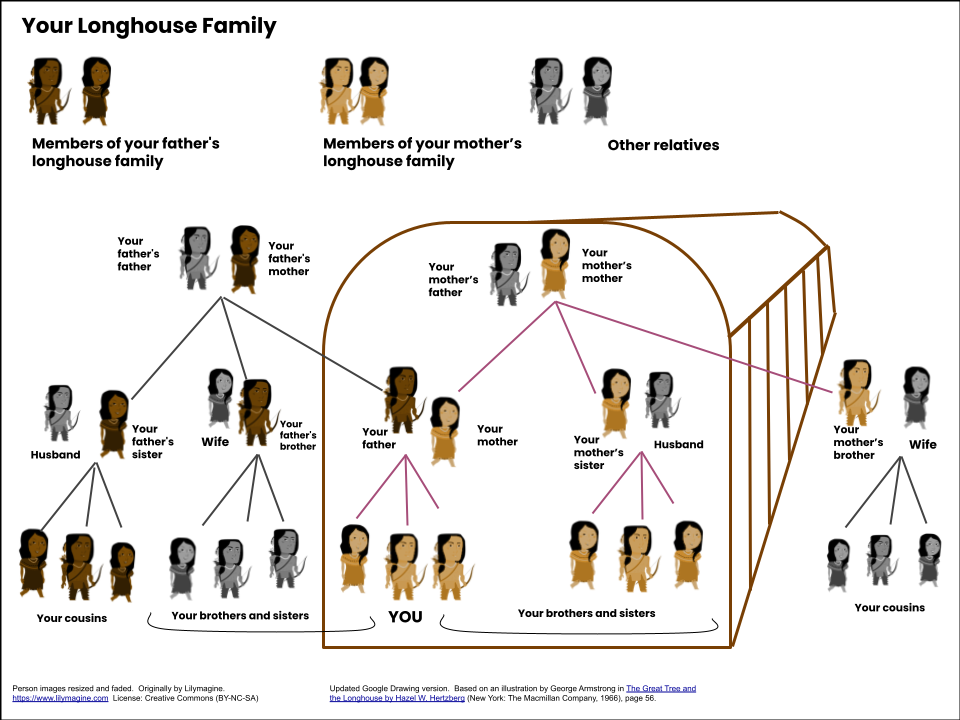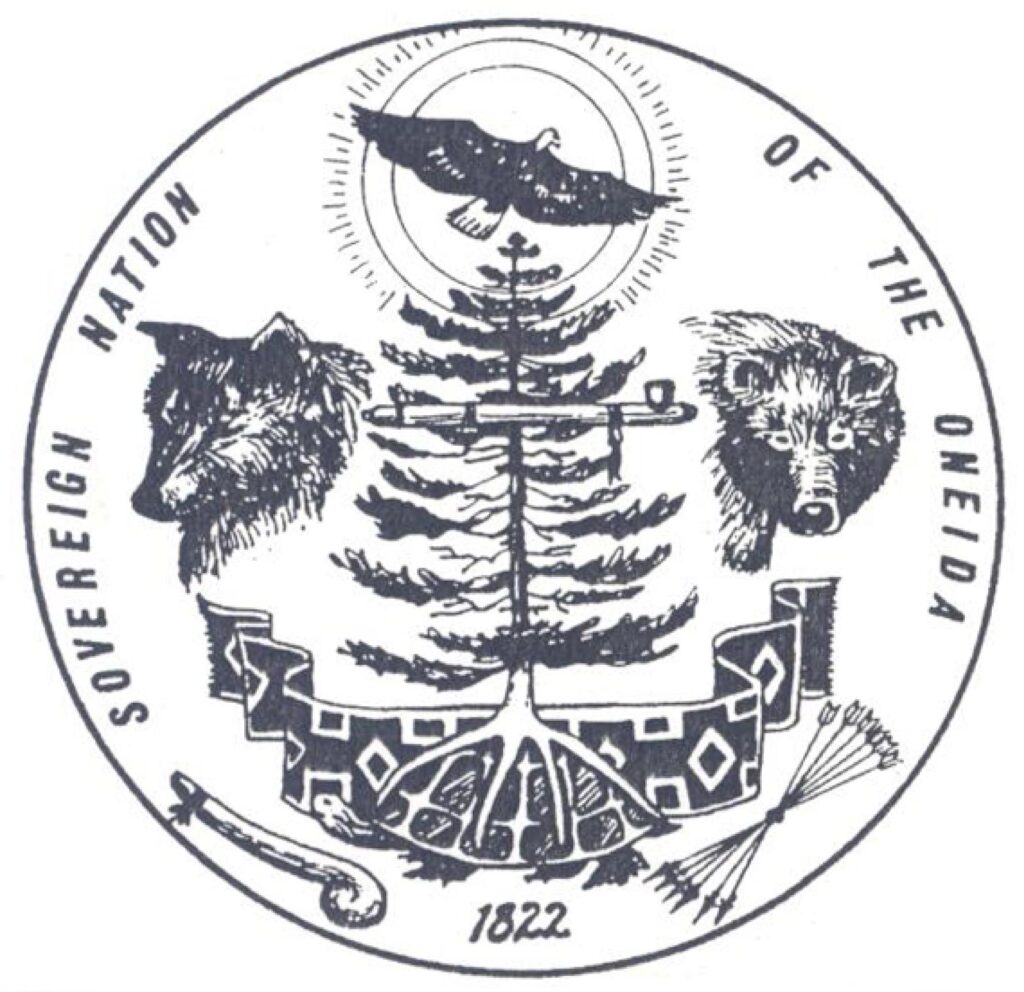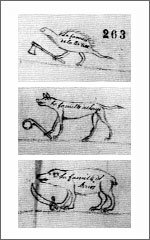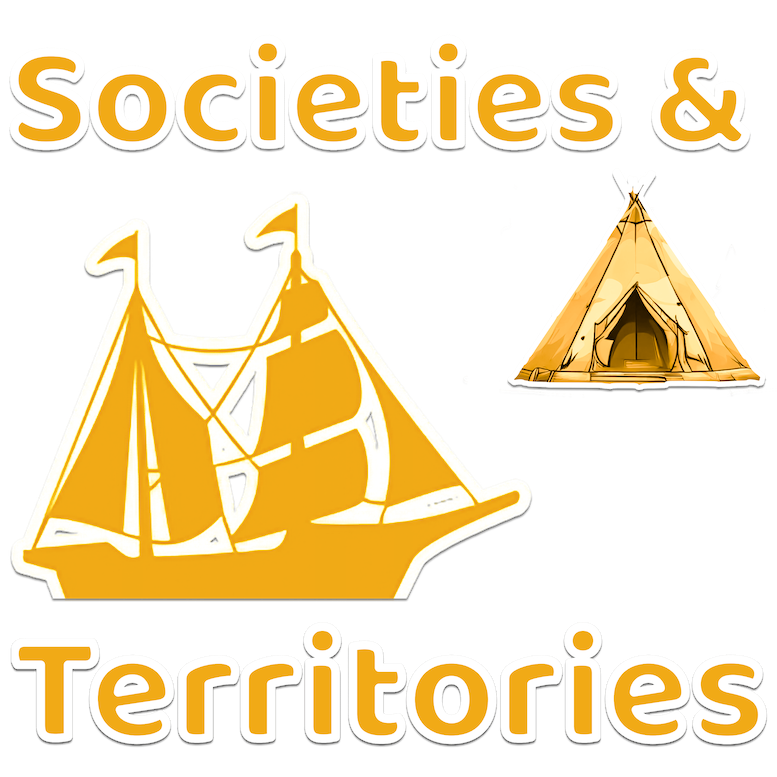One big family
For the Iroquoian people, belonging to a clan is very important. Since they are matrilineal societies, children belong to their mother’s clan. In the 1500s, they lived with their mother’s family in a longhouse. The oldest woman was the clan mother. The clan was made up of a group of several longhouses.
To better understand this, think of a tree. Imagine that the clan is the trunk, the branches are the longhouses and the leaves are the individuals.

“Not everyone living in your longhouse is a member of your longhouse family. For example, your father lives in your longhouse but remains a member of his mother’s longhouse family. And some members of your longhouse family (e.g., your mother’s married brothers) may live elsewhere, in their wives’ longhouses.”
So, the Iroquoian people’s society itself was organized entirely around the clan. For them, the clan was like one big extended family. All the members of a clan shared a distant ancestor and helped one other.
Each clan was also represented by a symbol, which was usually a bird or animal. For example, there may be the wolf clan, deer clan, heron clan or turtle clan.
 Image source and more information at: Oneida Nation Cultural Symbols: In and Around the Oneida Reservation |  Clan emblems of the three Kanienkehaka clans: Turtle, Wolf, and Bear. Image source via Deerfield History Museum |
Chiefs
Each clan had two chiefs: a civil chiefChiefs Definitions: The leaders of the clans and tribes were called chiefs. These men were elected..., who handled day-to-day affairs, and a war chiefChiefs Definitions: The leaders of the clans and tribes were called chiefs. These men were elected.... The civil chiefChiefs Definitions: The leaders of the clans and tribes were called chiefs. These men were elected... was a man and was chosen by the clan mothers. He was able to express himself clearly and was good at getting people to agree on decisions. Decisions were not imposed, but made as a group. The chiefChiefs Definitions: The leaders of the clans and tribes were called chiefs. These men were elected... acted as the clan’s spokesperson in council meetings or during encounters with other nations. The war chiefChiefs Definitions: The leaders of the clans and tribes were called chiefs. These men were elected... had different qualities: He had to have proven warrior skills. Usually, he was a man who was 30 to 40 years old.
AuthorAuthor - A person who writes something Auteur - Une personne qui écrit quelque chose: Service national du Récit de l’univers social
See also: Iroquois Women
Important concepts and big ideas:
[glossary slug=’clansystem’]




